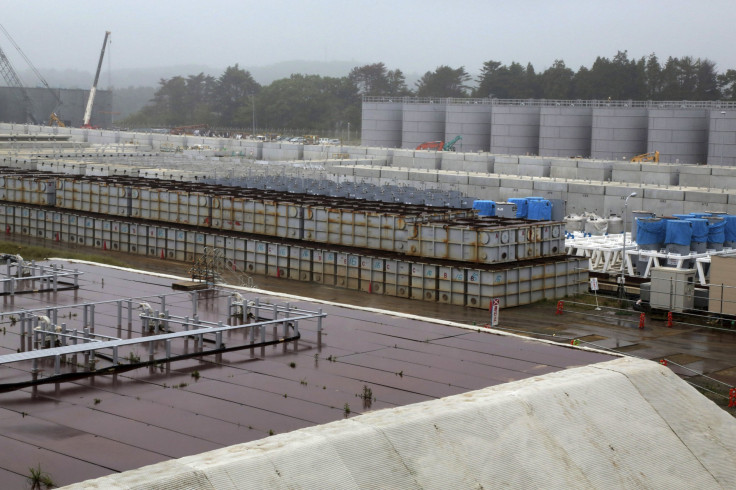Fresh Leakage Of Water With Dangerously High Levels Of Radiation Detected At Japan’s Fukushima Nuclear Plant

A leak of highly radioactive water from a storage tank at Japan's damaged Fukushima Daiichi nuclear power plant was detected on Monday, the plant’s operator Tokyo Electric Power Co., or Tepco, said on Tuesday.
The latest leak, unrelated to previous reports of radioactive water leaks at the plant in recent weeks, was detected by a worker. According to Tepco, at least 300 tons of water with dangerously high levels of radiation has leaked from the storage tank and radiation from the water could make a person who is within 1.6 feet of it seriously sick within hours, Reuters reported.
"One hundred millisieverts per hour is equivalent to the limit for accumulated exposure over five years for nuclear workers; so it can be said that we found a radiation level strong enough to give someone a five-year dose of radiation within one hour," Masayuki Ono, general manager of Tepco, told Reuters.
Tepco said that its workers who were monitoring the storage tanks had failed to detect the leak earlier.
"We failed to discover the leak at an early stage and we need to review not only the tanks but also our monitoring system," a Tepco official told Reuters.
The leak is a continuous one and workers at the power plant are transferring the water from the affected tank to a temporary storage facility.
“A puddle of approx. 3mx3mx1cm was found outside of the drain valve of the dike. Other than this puddle, there was another puddle of approx. 50cmx6mx1cm found outside of the dike… We started collecting water in the tank dike. Water was pumped up with a temporary pump to a temporary tank, and absorbent was placed inside the dike,” Tepco said in a statement.
Japan's Nuclear Regulation Authority has rated the latest leak as a level 1 incident in the International Nuclear and Radiological Event Scale, or INES. INES rates nuclear incidents and accidents on a scale starting from ‘0’ depending on the safety significance of the incidents, with zero denoting the least level of danger.
When the Fukushima facility was hit in March 2011, it was termed a level 7 accident by INES -- one of the worst nuclear disasters since the Chernobyl accident in 1986 -- after a giant tsunami triggered by an earthquake ravaged the nuclear plant, and damaged its back-up generators and cooling system, leading to a meltdown of its reactors.
The latest incident has underscored mounting concerns about the safety of the crippled reactor and Tepco's management of the disaster, after a series of studies found that radioactive water leaking from the wrecked reactor is contaminating ground and sea water around the plant.
On Aug. 7, Japan’s nuclear watchdog and government officials had described the situation as “serious” and “an emergency,” after the plant’s operator admitted that radioactive water from the nuclear plant was contaminating the Pacific Ocean. At the time, the Japanese government had said that it would help Tepco contain the radioactive water that is leaking in to the ocean.
Tepco, which has been pumping about 400 tons of groundwater daily to cool the melted reactors, is struggling to dispose of the used water, which is high in radioactive content. The process of cooling the nuclear reactors has to continue for an unspecified number of days until the permanently damaged plant is safely decommissioned.
The drainage system in the wrecked nuclear plant contains more than 20,000 tons of water with high levels of radioactive substances, and more than 1,000 giant tanks that were built to hold the contaminated water around the facility are nearly full, posing new challenges to the operator.
© Copyright IBTimes 2024. All rights reserved.





















